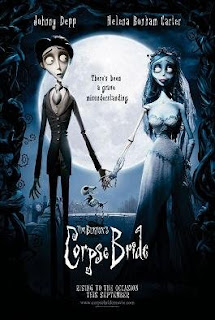A Apple Pie.
B bit it.
C cut it.
D dealt it.
E eat it.
F fought for it.
G got it.
H hid it.
J joined it.
K kept it.
L longed for it.
M mourned for it.
N nodded at it.
O opened it.
P peeped at it.
Q quartered it.
R ran for it.
S stole it.
T took it.
V viewed it.
W wanted it.
X Y Z &
Amperse and
All wished for
A piece in hand.
Apple Gathering by Georgina Rossetti
I plucked pink blossoms from mine
apple-tree
And wore them all that evening in my hair:
Then in due season when I went to see
I found no apples there.
With dangling basket all along the grass
As I had come I went the selfsame track:
My neighbours mocked me while they saw me pass
So empty-handed back.
Lilian and Lilias smiled in trudging by,
Their heaped-up basket teased me like a jeer;
Sweet-voiced they sang beneath the sunset sky,
Their mother's home was near.
Plump Gertrude passed me with her basket full,
A stronger hand than hers helped it along;
A voice talked with her through the shadows cool
More sweet to me than song.
Ah Willie, Willie, was my love less worth
Than apples with their green leaves piled above?
I counted rosiest apples on the earth
Of far less worth than love.
So once it was with me you stooped to talk
Laughing and listening in this very lane:
To think that by this way we used to walk
We shall not walk again!
I let my neighbours pass me, ones and twos
And groups; the latest said the night grew chill,
And hastened: but I loitered, while the dews
Fell fast I loitered still.
And wore them all that evening in my hair:
Then in due season when I went to see
I found no apples there.
With dangling basket all along the grass
As I had come I went the selfsame track:
My neighbours mocked me while they saw me pass
So empty-handed back.
Lilian and Lilias smiled in trudging by,
Their heaped-up basket teased me like a jeer;
Sweet-voiced they sang beneath the sunset sky,
Their mother's home was near.
Plump Gertrude passed me with her basket full,
A stronger hand than hers helped it along;
A voice talked with her through the shadows cool
More sweet to me than song.
Ah Willie, Willie, was my love less worth
Than apples with their green leaves piled above?
I counted rosiest apples on the earth
Of far less worth than love.
So once it was with me you stooped to talk
Laughing and listening in this very lane:
To think that by this way we used to walk
We shall not walk again!
I let my neighbours pass me, ones and twos
And groups; the latest said the night grew chill,
And hastened: but I loitered, while the dews
Fell fast I loitered still.
Jesus Christ the Apple Tree, 1803
The tree of life my soul hath seen,
Laden with fruit, and always green;
The trees of nature fruitless be,
Compar'd with Christ the Appletree.
This beauty doth all things excel,
By faith I know, but ne'er can tell
The glory which I now can see,
In Jesus Christ the Appletree.
For happiness I long have sought,
And pleasure dearly I have bought;
I miss'd of all; but now I see
'Tis found in Christ the Appletree.
I'm weary'd with my former toil—
Here I will sit and rest awhile,
Under the shadow I will be,
Of Jesus Christ the Appletree.
With great delight I'll make my stay,
There's none shall fright my soul away;
Among the sons of men I see
There's none like Christ the Appletree.
I'll sit and eat this fruit divine,
It cheers my heart like spirit'al wine;
And now this fruit is sweet to me,
That grows on Christ the Appletree.
This fruit doth make my soul to thrive,
It keeps my dying faith alive;
Which makes my soul in haste to be
With Jesus Christ the Appletree.
Two Little Apples by Anonymous
Two little apples hanging on a tree,
Two little apples smiling at me.
I shook that tree as hard as I could.
Down came the apples, Mm! Mm! Good!
Laden with fruit, and always green;
The trees of nature fruitless be,
Compar'd with Christ the Appletree.
This beauty doth all things excel,
By faith I know, but ne'er can tell
The glory which I now can see,
In Jesus Christ the Appletree.
For happiness I long have sought,
And pleasure dearly I have bought;
I miss'd of all; but now I see
'Tis found in Christ the Appletree.
I'm weary'd with my former toil—
Here I will sit and rest awhile,
Under the shadow I will be,
Of Jesus Christ the Appletree.
With great delight I'll make my stay,
There's none shall fright my soul away;
Among the sons of men I see
There's none like Christ the Appletree.
I'll sit and eat this fruit divine,
It cheers my heart like spirit'al wine;
And now this fruit is sweet to me,
That grows on Christ the Appletree.
This fruit doth make my soul to thrive,
It keeps my dying faith alive;
Which makes my soul in haste to be
With Jesus Christ the Appletree.
Two Little Apples by Anonymous
Two little apples hanging on a tree,
Two little apples smiling at me.
I shook that tree as hard as I could.
Down came the apples, Mm! Mm! Good!



























